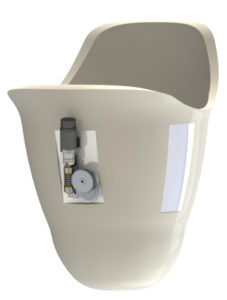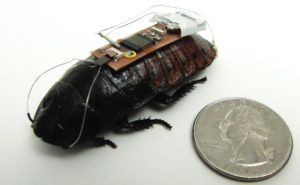When Michael McKnight ‘12 outlines the fundamentals of his research in layman’s terms, it is evident that the path he has chosen for himself is not for the faint of heart: “What I am doing is 40% electrical engineering, 20% textile science, some percent material science, and then some percentage of biomedical engineering to be able to understand how to design for implementation.”
McKnight began his career at NC State University as a Park Scholar majoring in biomedical engineering, a field he describes as “the interface of biology and all of the other [engineering] disciplines,” and made the decision to return to his alma mater to pursue a PhD shortly after returning from a year in Honduras with Engineering World Health. He then joined the Center for Advanced Self-Powered Systems of Integrated Sensors and Technologies (ASSIST), located on NC State’s Centennial Campus and funded by the National Science Foundation. McKnight cites his transition back to NC State as being a conscious one based on the focus the university has put on multidisciplinary studies, interdepartmental research, and collaboration.
“It’s actually a community where the students feel more like peers to the professors… I feel like I get more interaction with other professors throughout the department just by being a part of the center that otherwise most Ph.D. students don’t get. The Park Scholarships program really encourages you to seek out those kinds of environments where you are simultaneously supported and challenged by those around you.”

McKnight and an array of collaborators from both the College of Textiles and the College of Engineering are focused on creating a “smart textile” that could map body temperature, pressure, wetness detection, and heart rate, to name a few, all while utilizing sensors made from the fibers of the textile rather than sewn in after the fact. This technology could have a wide variety of practical applications, but the primary focus for McKnight and NC State’s researchers has been healthcare, specifically its implementation in prosthetic limb use. The unknown data a physician might want to monitor, such as the map of pressure on the limb as the patient is wearing a prosthetic or the way the socket twists as the patient moves, are all factors these sensors can detect when woven into a textile.
“We haven’t seen anyone that’s working on building the sensors into the fibers themselves,” McKnight says. “There are other people working on ways to put sensors on textiles. Google is actually working on a similar project, but their focus is on working on a touch interface for phones - a totally different application. The advantage of ours is that it is designed to enable the multiple types of sensing whereas theirs is just pressure – binary.”
Remarkable as it is, this isn’t the only groundbreaking research McKnight has worked on with his faculty advisor, Dr. Alpert Bozkurt, in the ASSIST Center. Their integrated bionics lab explores how electrical engineering systems can be applied in a variety of ways to better understand biology. McKnight co-authored a paper with a fellow doctoral student in 2014, strikingly reminiscent of a science fiction novel more so than a product of academia, which outlines their study attaching electrodes to moth antennae to monitor the electric signals used while flying to control movement. As the experiment in “neuroengineering” has progressed, the lab has shifted its focus to cockroaches; McKnight and his colleagues have the ability to instruct them to turn right, left, and walk forward via remote control. The lab is also involved in K9 training experiments that would automate the process of providing rewards and sending verbal commands via a “backpack.”
“Imagine having a speaker on the backpack,” he says, “that allows a dog to hear a trainer saying ‘Good Boy’ or ‘Fetch’ … we’re working to find the best method to train the dogs that is reliable and repeatable. Though each dog may react differently, we can create backpacks that learn how the dog responds and adjust the training as necessary.”
McKnight will be completing his Ph.D. in Spring 2018, so one of the major questions on his mind is what his next step will be, after devoting 8 years to engineering research at NC State. Ultimately, he goes back to his initial reason for graduate school: a desire to be a knowledgeable resource in the field of technology policy. It was in Honduras the year before beginning his PhD that technology, health, and policy began to intersect for McKnight. He and his team worked to introduce software designed specifically for developing country psychology management into the public healthcare system, but it had its own set of challenges working within the constraints of the Honduran government.
“I came to get a PhD to get a deeper understanding of very advanced technology to be able to provide guidance hopefully to public agencies or the government on how to develop public policy in advance of these technologies making it to market.”
post by Lauren Caddick
published 2017.09.01

